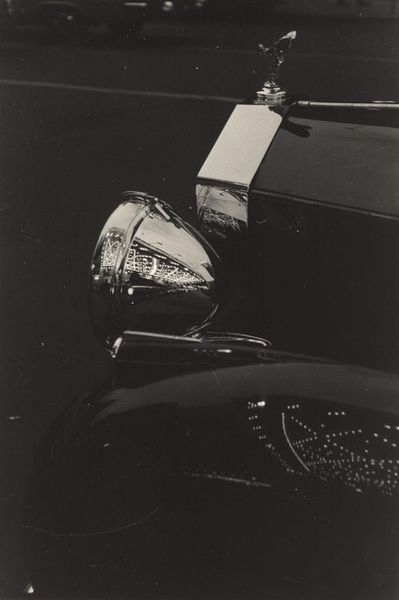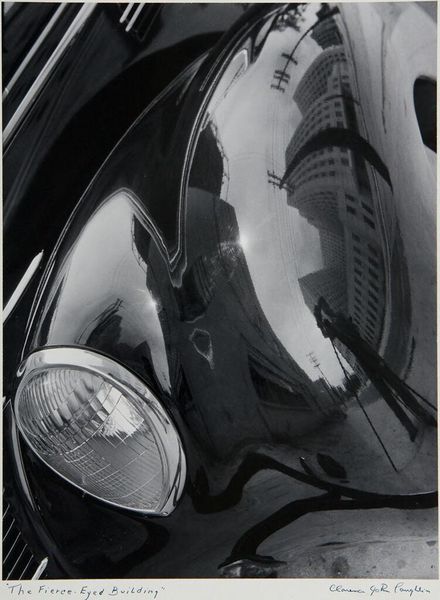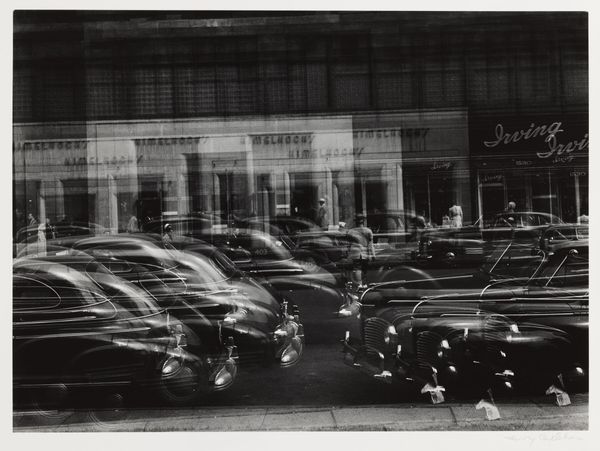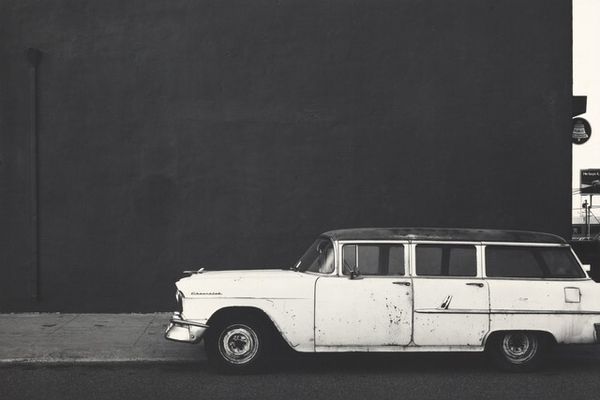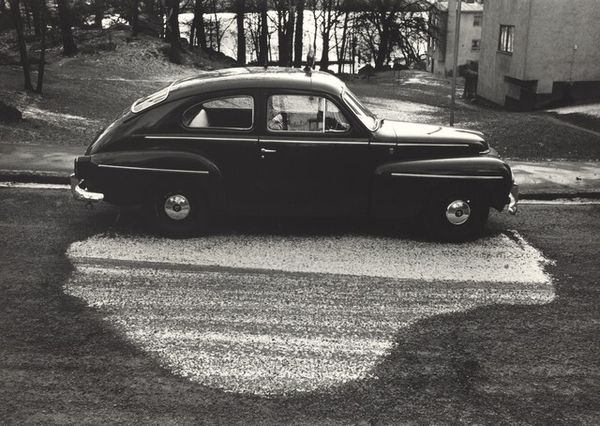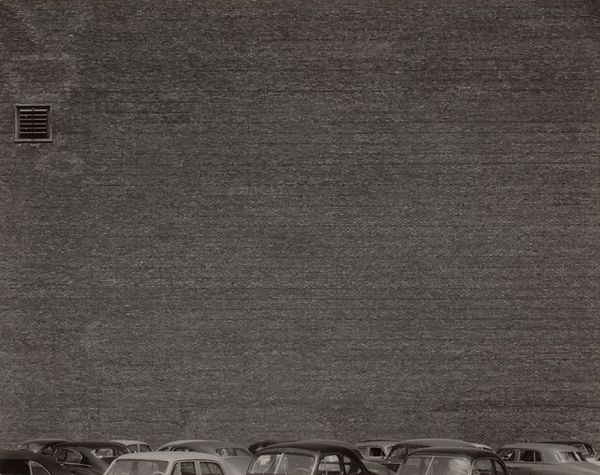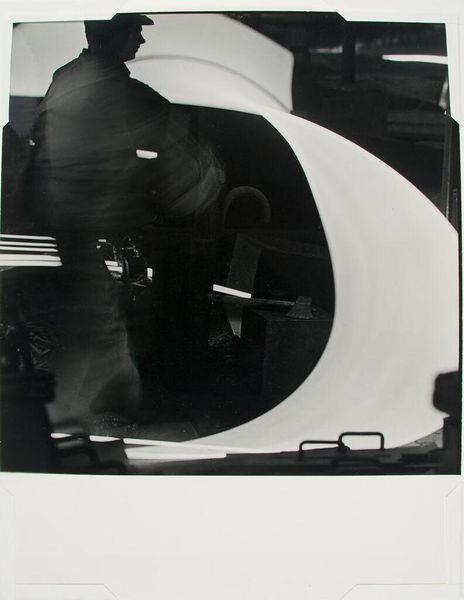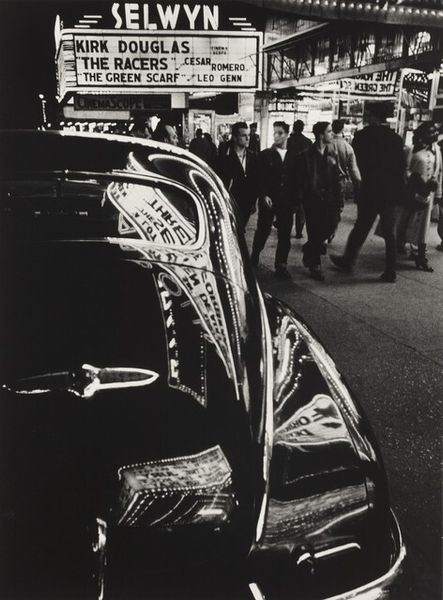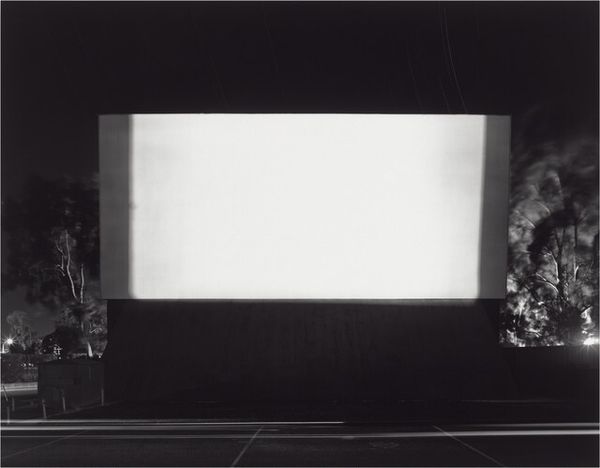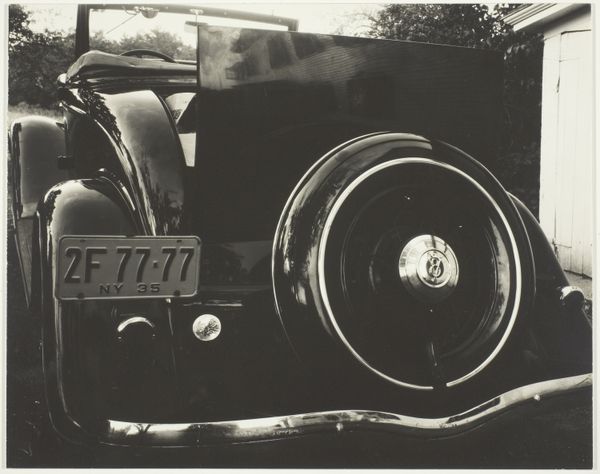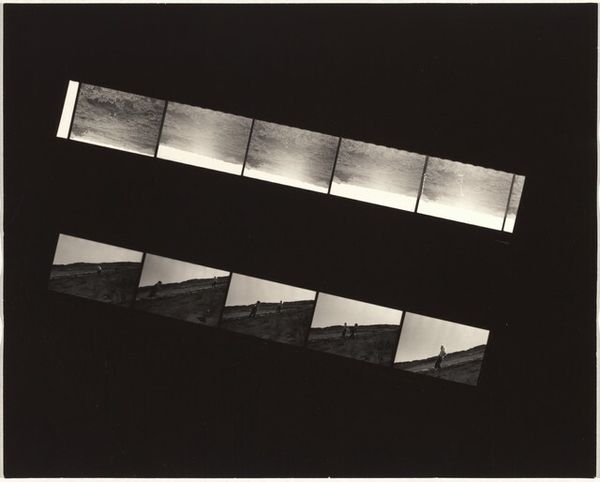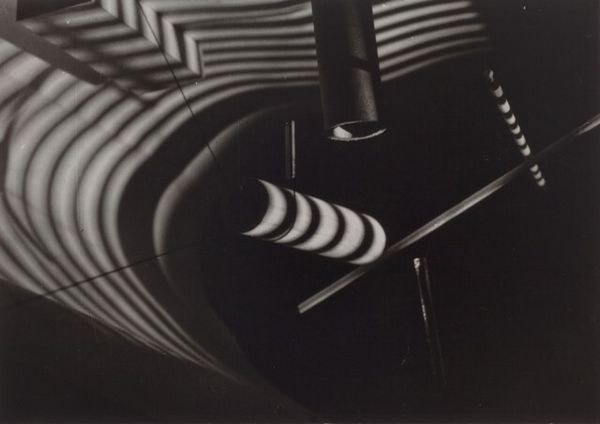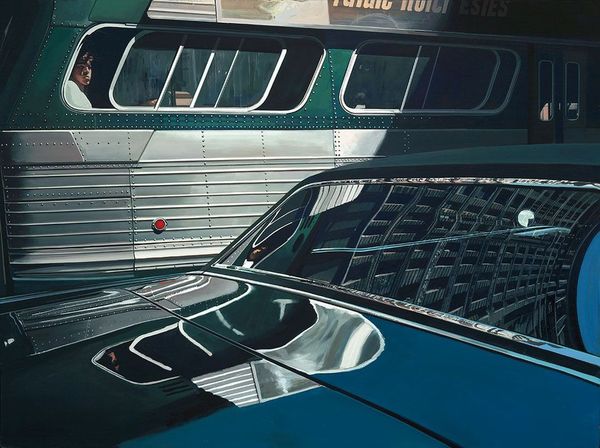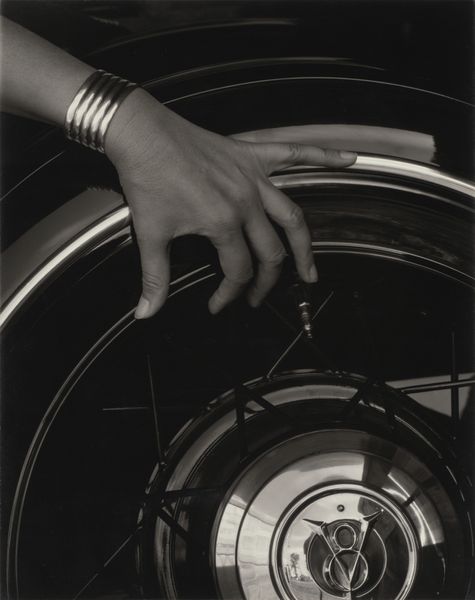
photography, gelatin-silver-print
#
technical car design render
#
automotive illustration
#
automotive concept
#
vehicle design
#
car photography
#
automotive design photography
#
street-photography
#
photography
#
geometric
#
car design
#
gelatin-silver-print
#
metallic object render
#
automotive photography
#
cityscape
#
car mechanical design
#
modernism
Dimensions: image: 21.5 x 31.7 cm (8 7/16 x 12 1/2 in.) sheet: 27.7 x 35.6 cm (10 7/8 x 14 in.)
Copyright: National Gallery of Art: CC0 1.0
Curator: Immediately, the photograph plunges me into a noir-ish mood, a sense of mystery hanging in the dark spaces between those gleaming cars. Editor: That’s a fantastic entry point. The artwork we're looking at is "Park Avenue Garage, New York City," a gelatin-silver print by Louis Faurer, likely taken sometime between 1950 and 1980. What stands out is his choice to highlight these mass-produced objects in almost abstract shapes. Curator: Right. It feels more like an industrial study of form than just cars parked in a garage. You can almost feel the weight of the steel and the processes of its casting just from the photograph, that contrast is so clear, that this product has just come out from factories and that it means also wealth. Editor: Precisely. Thinking about it historically, consider Park Avenue at this time. It represented post-war affluence and social stratification. A garage full of such cars is a powerful symbol of American capitalism at its zenith, an aspirational emblem to the world, an aspiration materialized through metalworking. Curator: Definitely. And Faurer, working with gelatin-silver, manages to elevate the ordinary to the extraordinary. It's more than mere documentation, isn't it? Editor: Not at all. His framing asks: How does the culture of vehicle production shape our urban experience? It goes to the deeper politics of design. The material of mass consumption suddenly becomes the object of contemplation. Curator: Seeing it from that perspective makes me realize the power of such simple industrial products in defining social hierarchies. A photo can act as a really good study object, almost a sculpture of social values. Editor: And seeing through Faurer's lens, we can analyze how those social values are, in turn, manufactured and consumed. Curator: So the interplay of shadow and light really emphasizes this constant making and using... like the cars exist just for being parked, consumed… Editor: Yes, that tension makes it visually captivating while embedding deep social implications that invites re-assessment of urban living through its very industrial components.
Comments
No comments
Be the first to comment and join the conversation on the ultimate creative platform.
